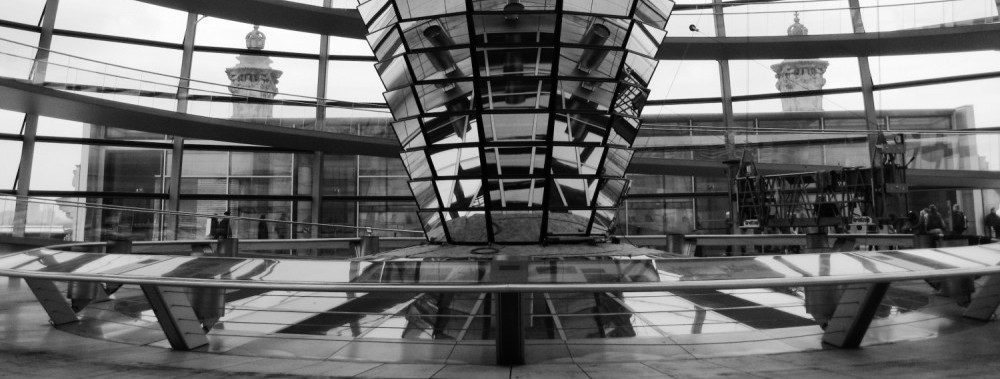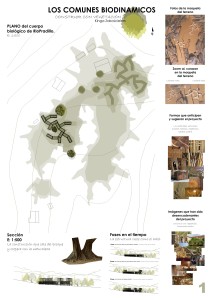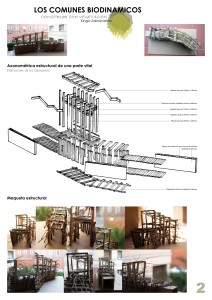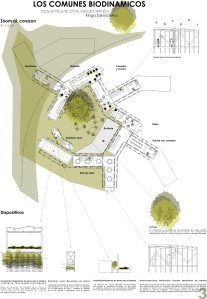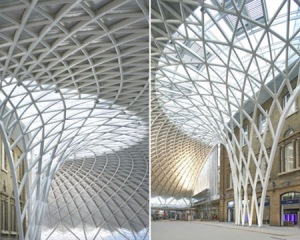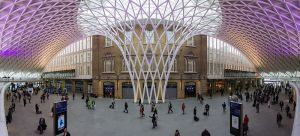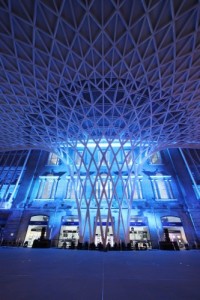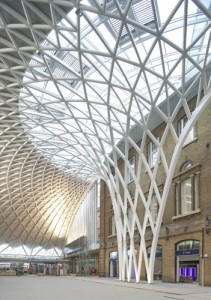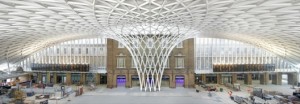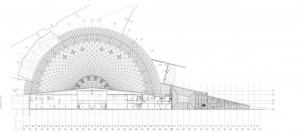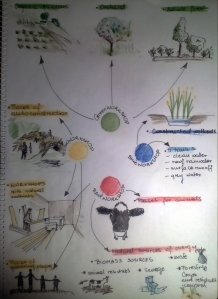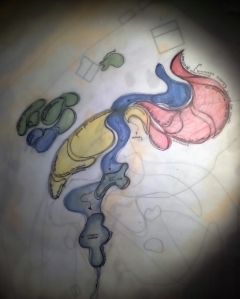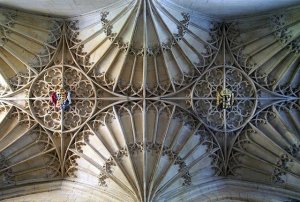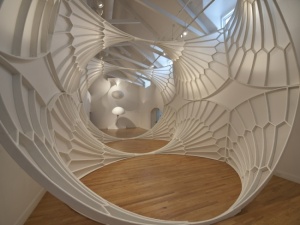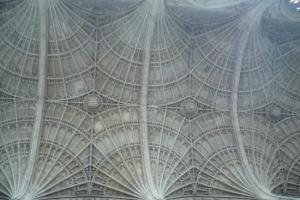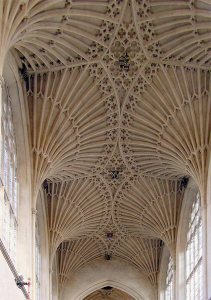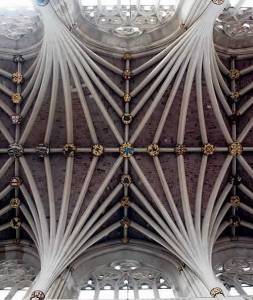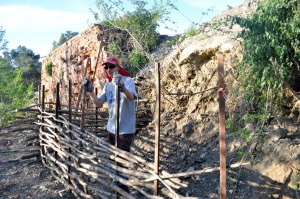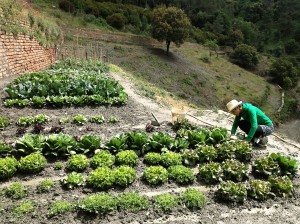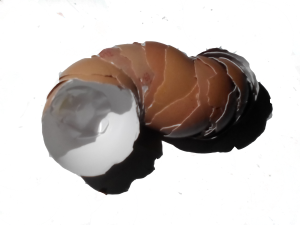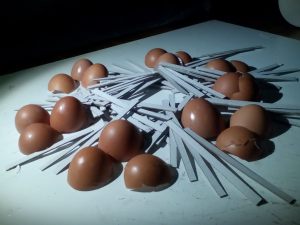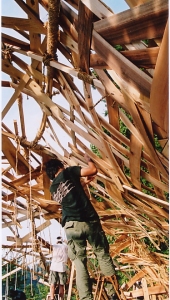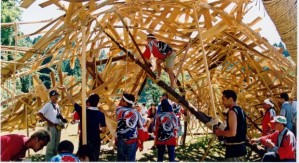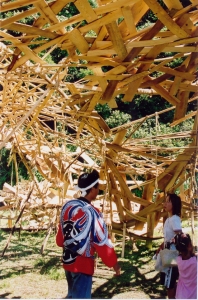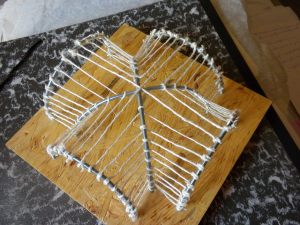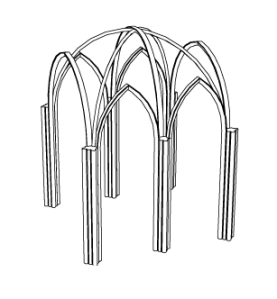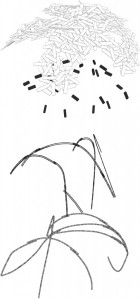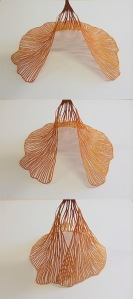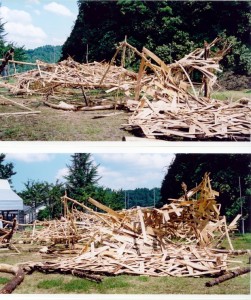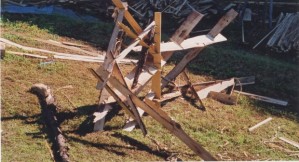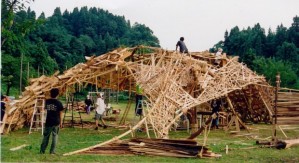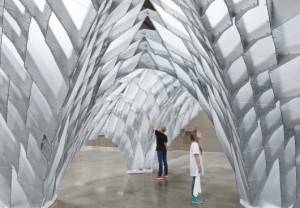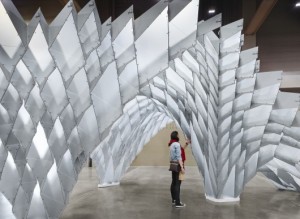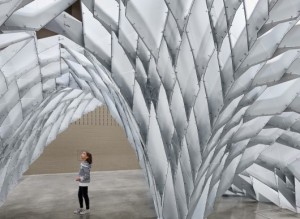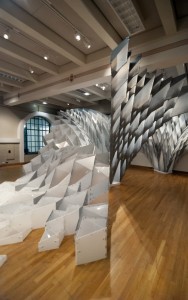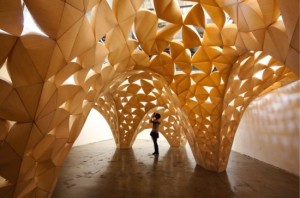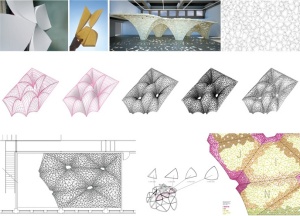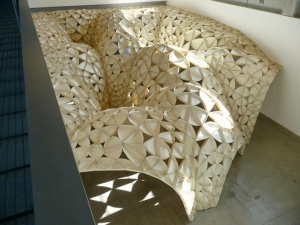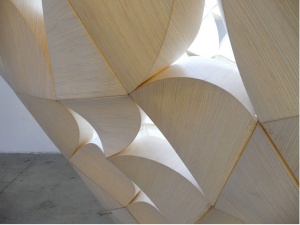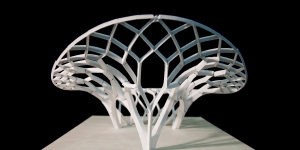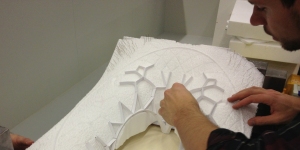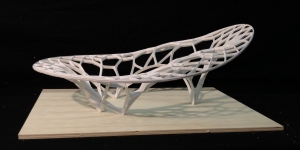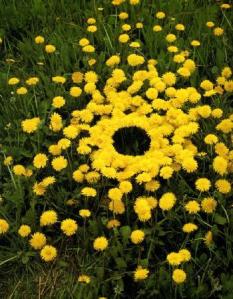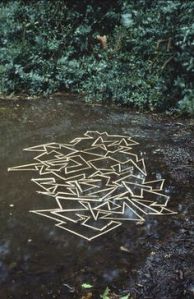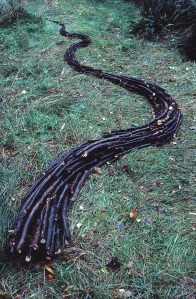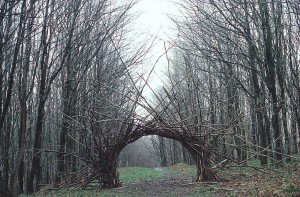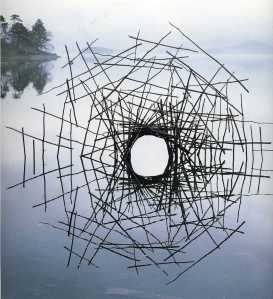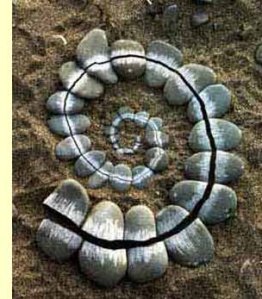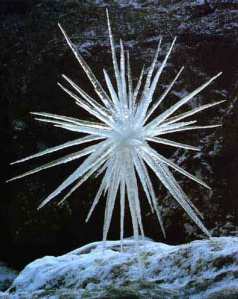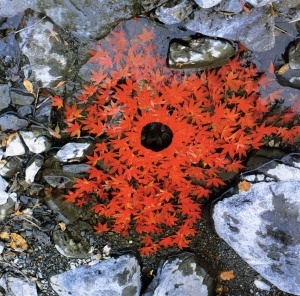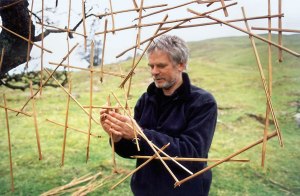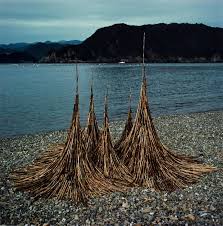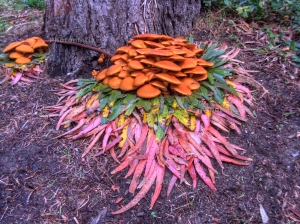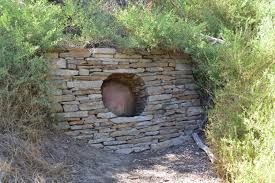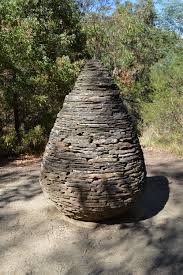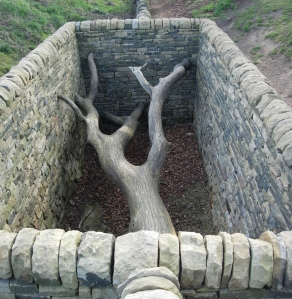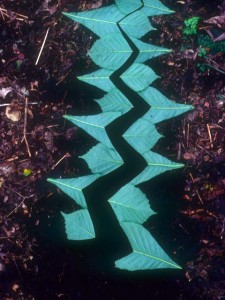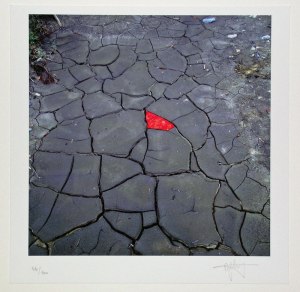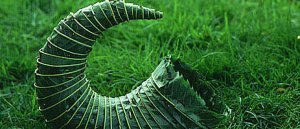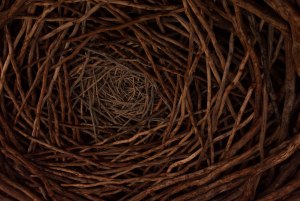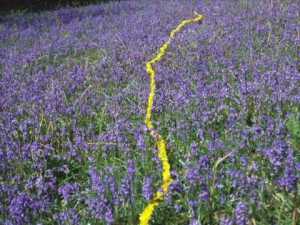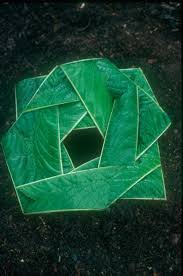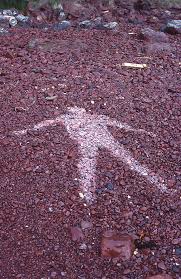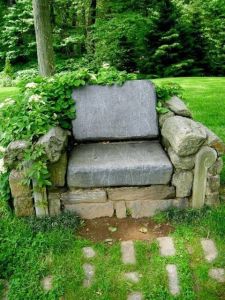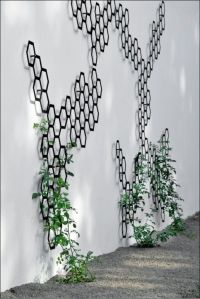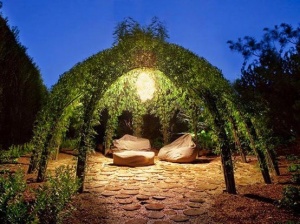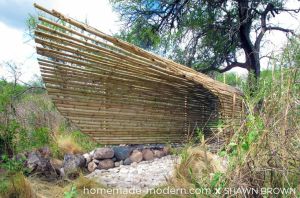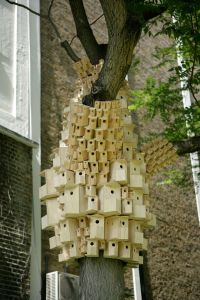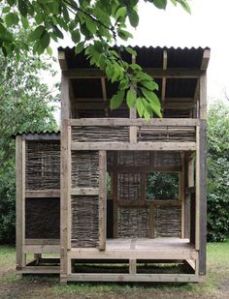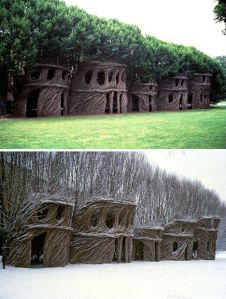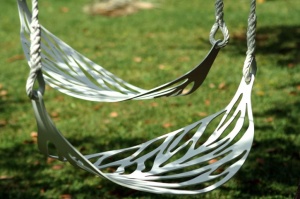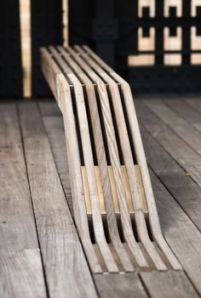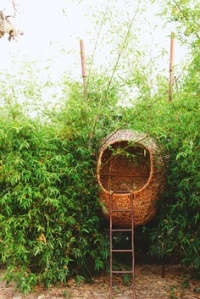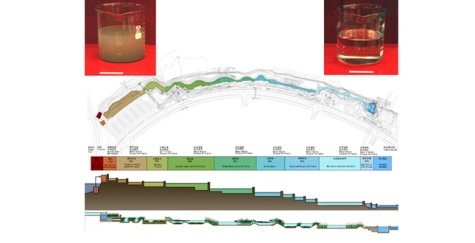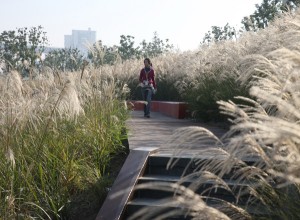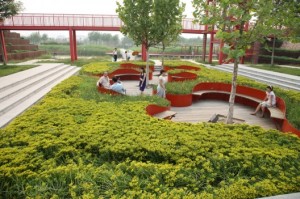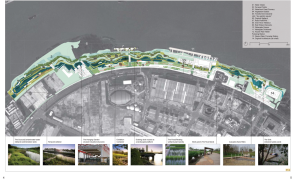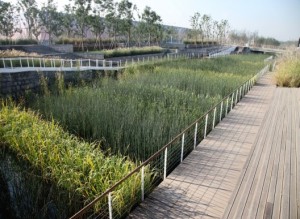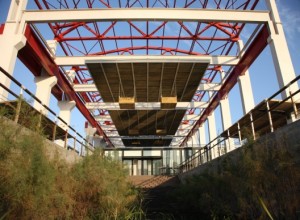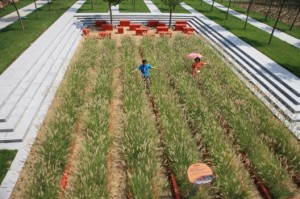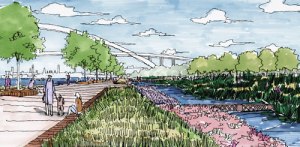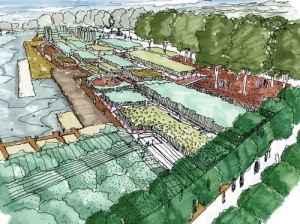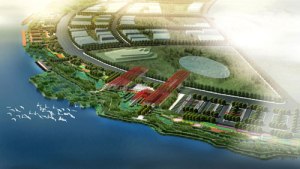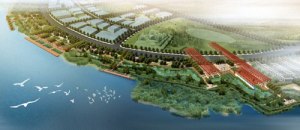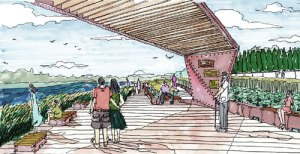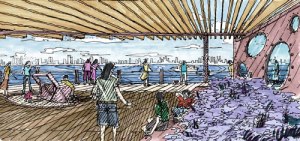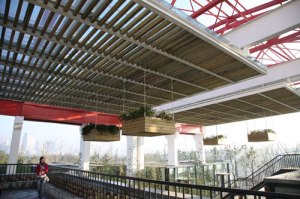Construir con vegetación
Kings cross’station_John McAlan+Partners
Developing the project_ Looking for the way of construct the roofing of flow of spaces
I made a diagram of workshops in Riopradillo. The most important idea is based on the main line which is marked by the water flowing and constructed wetlands.
On the right side we can see roofing for people who cooperates with animals, places for animals to stay and also compost (biomass energy) and solar energy,.
On the left side there are workshops for people for autoconstruction. It is also a place for gathering.
On the left side we can also notice places connected with nature and food production: organic gardens, edible forest etc.
I would like to make a roofing above the spaces for people and animals.
I have found the inspiration in fan vaulting of gothic cathedrals and also I really like modern interpretations of this construction.
DEVELOPING THE PROJECT_ FUNCIONAL PROGRAM BASED ON VALLADURA
The group comprises three laboratories — Food Lab, Energy Lab and Green FabLab — which produce the three things we need to be self-sufficient: food, energy and many of the things essential to the good life, combining the age-old ancestral knowledge that connects us to nature with the latest advanced technology.
The laboratories are gearned to investigating the processes involved in the production of energy, food and things locally, using the resources of the immediate environment, and developing technologies and knowledge that can be employed in the construction of a new global human habitat.
FoodLab
We need the energy we get from food. Food production is based on various forms of cultivation including organic gardens, orchards (sad), edible forests and farm animals, all managed by researchers and students.
We close the cycle of food production all the way to human consumption and the subsequent (dalszy) production of energy and new nutrients for the soil, researching technologies for both large- and small-scale food production.
There will be parallel benefits in waste management, effectively closing the circle of nutrient management by way of a transformation process with implications for energy and the economy.
Valldaura aims to be a self-sufficient environment capable of meet its needs by means of renewables. The keystone of the whole system is the Energrid research project, developed by IaaC for Endesa, in collaboration with the i2Cat Foundation, and being implemented for the first time at Valldaura Labs. Energrid is a kind of energy Internet, a system in which the various Valldaura buildings produce and consume, store or share energy according to strict principles of efficiency. Each electrical node (switch or power point) has a microcomputer (developed in the project) that monitors individual consumption and can avoid demand peaks by actively managing consumption. It is intended to introduce this model in the urban environment over the next few years. At Valldaura, energy comes from a biomass plant that uses local resources, as well as solar panels and mini wind-turbine systems.
At Valldaura we are also developing the HydroGrid project in order to ensure efficient water management, based on the principle of having five different tanks to allow the most appropriate kind of water to be used for each purpose. Clean water, roof rainwater, surface runoff from the plazas, greywater and sewage are recycled for maximum water saving.
Valldaura is also developing the Global Traceability of Matter project, in order to extend our awareness of all the materials and transformation processes involved in the production of any object, including residues and re-use.
As part of the production cycle we have created the Green FabLab, a digital fabrication lab that uses natural resources.
One of our lines of research is centred on the development of new materials from natural ingredients such as wood, earth or minerals for building, to make bricks, glass and resins using simple ancestral technologies and modern high-tech processes.
At Valldaura we can carry out the complete cycle of matter transformation, from a sustainably managed tree in the forest which gives us wood that is dried, designed, and cut on machines running on renewable energy to produce furniture and structural elements.
The laboratory has several traditional bòvila brickyard kilns of the type traditionally found on large rural estates in Catalonia; at Valldaura the brickyard was located in what is now the restaurant area.
Different activities
Grey water filters
- Prepare hay (siano) / reed (trzcina) bed / water aeration (napowietrzanie) filters
- Make the outlines (kontur) for the water depositWeaving and Transplants
- Weaving (tkać) brushes (zarośla) into the living fence
- Transplanting spiky (kolczaste) plants!
Brick Reclamation (reutylizacja)
- Selecting worthy bricks.
- Reforming and restoring them.
- Groundwork and mulching (pierzyć)
- Winter planting
In RioPradillo I want to make FLOW OF SUCH SPACES, WORKSHOPS FOR LOCAL COMMUNITY.
– greenWORKSHOP- smart nutricient management.
- small scale food production,
- various form of cultivation: organic gardens, orchards (sad), edible forests.
- places of growing their own food.
– yellowWORKSHOP- smart autoconstruction and using natural materials
- places of autoconstruction
- places of gathering and working together
- workshop where people will be able to work with natural materials
– blueWORKSHOP- smart and efficient water management
- constructed wetlands
- self- sufficient environment
- 5 tanks :
- clean water
- roof rainwater
- surface runoff
- grey water
– redWORKSHOP
- places for farm animals (close to the wetlands)
- places for people to cooperate with the animals and nature
- using natural sources of energy (biomass, solar panels).
–
DEVELOPING A PROJECT_ FLOW OF SPACES CONSTRUCTED OF WOOD- BEGINING
I want to develop this idea with domes but I have to change some things.
I want to make this domes more open-work (not like a shel). I want to construct this domes of wooden planks (as in the previous note).
I want to connect this wooden planks on the floor of Riopradillo with the domes to make flow of spaces.
Very important for me is a nature circle which will be represented by wetlands. Now I need to change the shape of this constructed wetlands, becuase this one is too closed.
DEVELOPING A PROJECT_Koshirakura
In Riopradillo I want to make two circles of domes structures similar to these ones. I would like to make two circles of movements. One circle will be connected with the movement of the animals and people (workshops, places of gathering the people, places for animals to stay) and the second one with nature (circle of constructed wetlands).
I really like this dome structure. It reminds me my maquet made of bark. This dome is a great example of transport the idea of arranging narrow pieces of planks into 3D model.
I also want to connect this dome structure with the “floor” of Riopradillo. I would like to make a flow of spaces within this terrain.
Material: wood, ‘surplus’ timber – off-cuts from the timber industry and thinned wood from forest maintenance – joined with ropes.
Second layer: Pieces of planks with incomplete rectangular sections, 2 to 5 cm thick
Framework: framework was formed of eight nemagari trunks
Mine framework: ? Rib vault?
Still framework connected with scattered wooden planks.
This structure creates very interesting place to stay underneeth. To work together, to gather, to make something good for the environment, to learn from each other, to produce food, to construct with the natural materials which are eco-friendly, to build, to create new better world…
Other types of interesting domes:
http://www.archdaily.com/489778/sxsw-features-parametric-vault-designed-by-ota-and-ut-students/
http://www.pleatfarm.com/2009/10/14/voussoir-cloud-by-iwamotoscott-architecture/
http://block.arch.ethz.ch/brg/research/project/rib-vaulted-funnel-shell-models
INSPIRATIONS_IMAGES_Andy Goldsworthy
INSPIRATIONS_ IMAGES
WATER PURYFICATION_ Shanghai Houtan Park: Landscape as a Living System
http://www.turenscape.com/english/
Built on a brownfield of a former industrial site, Houtan Park is a regenerative living landscape on Shanghai’s Huangpu riverfront. The park’s constructed wetland, ecological flood control, reclaimed industrial structures and materials, and urban agriculture are integral components of an overall restorative design strategy to treat polluted river water and recover the degraded waterfront in an aesthetically pleasing way.
